Home » Construction Management (Page 2)
Category Archives: Construction Management
Industry Roundup: Yanmar Sales Up 16% and more
MANUFACTURERS AND SUPPLIERS
Yanmar Sales Up 16% for First Half of 2021 Fiscal Year
Yanmar announced a 16% increase in net sales for the first half of its 2021 fiscal year compared with the same six-month period last year. (Yanmar’s fiscal year runs from April 1 to March 31.)
The manufacturer says sales and profits increased due to sales growth mainly outside Japan and the promotion of company-wide cost structure reforms. Increased orders in the industrial engine business for North America, Europe and China, as well as in the construction machinery and marine businesses for Europe, contributed to the strong performance.
Yanmar plans to overcome supply chain shortages and inflation through ongoing implementation of cost structure reforms, improving operational efficiency through digital tools and expanding the business in overseas markets.
Sany Announces Dealer Finance Partner, Tandem Finance
Sany America is partnering with Tandem Finance to provide financing services to its dealer network. The collaboration will provide dealers with the ability to offer payment options for Sany’s lines of compact, medium and heavy equipment. A dedicated vendor service team has been added at Tandem to support Sany’s needs with underwriting, funding and administering credit transactions.
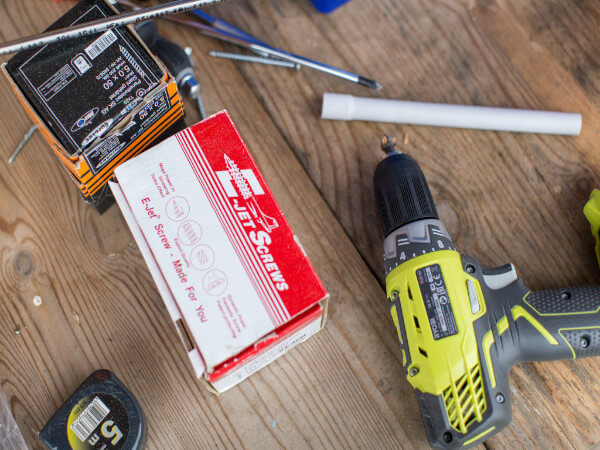
The founding family’s trust was unable to buy out the minority shares of South African manufacturer Bell Equipment.Bell EquipmentBell Equipment Buyout Fails
A buyout of Bell Equipment by IA Bell, the founding family’s holding company and largest shareholder of Bell Equipment, has failed.
The Bell family trust attempted to purchase all of the minority shares of the Johannesburg Stock Exchange-listed articulated dump truck and tracked carrier manufacturer and then delist the company.
The company and the board did not consider the offer “fair and reasonable.” Corporate leaders and minority shareholders have lauded the announcement as a victory.
DEALERS AND DISTRIBUTORS
Kelly Tractor Becomes Magni Dealer
Magni, a manufacturer of rotating and heavy lift telehandlers, has added Kelly Tractor as a dealer. Based in West Palm Beach, Florida, Kelly Tractor will retail and rent Magni’s product line up, as well as provide parts and service.
Kelly has seven locations throughout southern and central Florida.
Hills Machinery Co. Adds Two Locations in North Carolina
Hills Machinery Co. is adding locations in Mills River and Leland, North Carolina.
With current facilities in Charlotte, Greensboro, Raleigh, Greenville and Asheville, North Carolina, Hills has a goal of establishing each of its locations within approximately 90 miles of the next closest dealership.
The company carries Case Construction Equipment, Mauldin and Rokbak, and recently added Astec paving equipment.
lta Equipment Adding Compact Equipment-Specific Facility in Florida
Alta Equipment is adding a separate store in the Tampa, Florida area to support the needs of its growing compact equipment division.
Located across the street from Alta’s Florida Division main operations, the center will handle all sales, service and parts functions for compact machines. This location will be the model for other compact locations to come, says Alta.
Lines include Volvo, Takeuchi, Toro, Avant and Leguan Lifts.
Greg Downing Named Operations Director for Monroe Tractor
Monroe Tractor has named Greg Downing operations director for its New York and New England locations. The territory includes 15 locations across New York State, Massachusetts, Connecticut, Rhode Island and Vermont, offering Case Construction Equipment, Wirtgen, Screen Machine, Hamm, and Vogele. Downing most recently served as operations director for a New York equipment dealership.
JCB’s New Electric 505-20E Loadall Telehandler Delivers Diesel-Like Performance
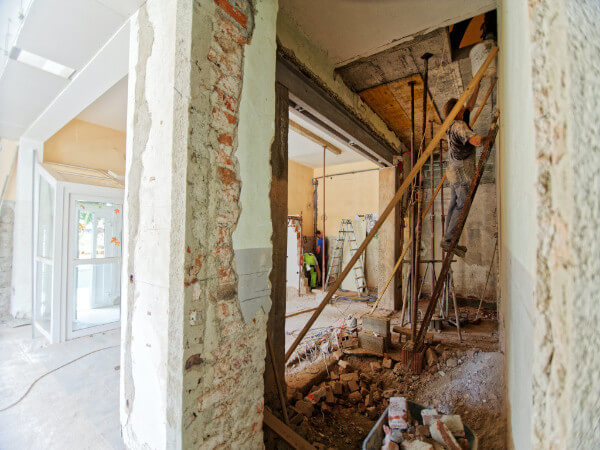
JCB has unveiled the 505-20E, a fully electric version of its Loadall telehandler. The new zero-emissions machine has a lift capacity of 5,250 pounds and 20 feet of lift height.
Dual electric motors power the machine, one for the driveline and the other for the hydraulic system. The 30-horsepower hydraulic system pushes a fixed displacement gear pump that delivers 21 gallons of flow per minute maximum.
The 96-volt lithium-ion battery holds enough charge to work for a full shift. Charging options include on- and off-board rapid charging. The 110-volt/16-amp on-board charger can fill the battery in 8 to 10 hours, and a 220-volt on-board charger is available as an option. JCB also offers a universal charger that can be used for a rapid top-up in as little as one hour.
The emissions-free operation of the JCB 505-20E is not only an environmental plus, it enables you to use the machine indoors, where diesel exhaust would be problematic. The battery power also drops noise levels dramatically — from an in-cab level of 92.2 decibels to just 66.7 decibels — less volume than a vacuum cleaner. To keep crews safe around this quieter machine, a white-noise reversing alarm is standard equipment. It is available in cab or canopy configurations.
At 5,250 pounds, the 505-20E is slightly lighter than its diesel counterpart, but the dimensions are the same: 12-foot 1-inch outside turn radius and an overall height of 6 feet 2 inches. Cycle times are likewise the same with no loss of performance, and it can be used with forks, a range of buckets and other JCB Loadall attachments.
Did you miss our previous article…
https://constructionosa.org/?p=1042
Cat intros 8-foot pavers for smaller, tighter jobs
To the contractors asking for a compact paver from Caterpillar: your wish has been granted.
Cat has filled the gap in its product offering with a new line of 8-foot size-class paver and screed combinations. The AP400, AP455, AP500 and AP555 asphalt pavers, along with the SE47 V and SE47 FM asphalt screeds, are designed for small, tight jobs such as narrow streets, driveways and small parking lots.
“Compact pavers and screeds offer opportunity to both large and small contractors,” says Cat sales consultant Jon Anderson. “For large contractors doing pullouts and shoulders, this is the perfect machine for that at a lower cost point. For smaller customers, it gives them the opportunity to move up and do some bigger jobs that they’ve always wanted to bid on but didn’t feel they had the equipment for.”
The SE47 V screed can be extended to any width between 8 and 15 feet 6 inches, with a maximum width of 20 feet. The SE47 FM screed offers a standard paving range between 8 feet and 15 feet 6 inches, with a maximum width of 20 feet 6 inches. Both screeds offer paving depths up to 10 inches.
“One of the hardest things is to do a job where the paver is too big and you’ve got to do everything at the very minimum width,” says Anderson. “It’s a real challenge, so this provides new opportunities.”
Easy to load or road
When moving between multiple jobs per day, equipment must be easy to haul. Cat says these 13- to 15-ton size-class machines don’t require special permits for transport and have convenient tie-down locations.
With a length of less than 18 feet 6 inches and width of 8 feet 6 inches, the pavers easily fit on trailers and can be hauled with other equipment. In addition, the front-loading angle of 17 degrees and high bumper clearance simplifies loading without the need for additional blocking material.
Roading it rather than loading it? Anderson says the versatile undercarriage design delivers “excellent traction and speed for traveling to the next starting point.”
The Cat Mobil-trac undercarriage design used on the AP455 and AP555 features a unique four-bogie system with self-tensioning accumulators and center guide blocks. This helps prevent slippage and reduce wear, while the oscillating bogie wheels help deliver smooth transitions when exiting the cut over transverse joints of mill and fill applications.
A simple wheel undercarriage design is also available with sand-rib or radial drive tire options. The AP400 can be equipped with a front-wheel assist option, while the AP500 can be equipped with front-wheel assist or the all-wheel drive option for increased performance on soft base materials or when pushing heavy loads.
Simple, intuitive operation

Simplified menu structures offer touch-screen activation from the main screen.Equipment WorldStandardized controls across the Cat paving product line make it easier to move crew members between machines and train new hires.
“We have some new, simplified menu structures that make it easier to make changes and a single-touch activation for the feeder system,” says Anderson. “The new display has fantastic visibility even in bright sunlight.”
The screed heat, fumes ventilation, vibration settings and the washdown system are all accessible with the touch of a button from the main menu, helping operators start faster and increase productivity.
Versatile new screeds
Screeds with rear or front-mounted extenders enable contractors to match their application needs. The SE47 V is a rear-mounted screed, meaning hydraulic extenders are behind the main screed. This design enables material to naturally flow out to the end-gates for smooth, stable performance.
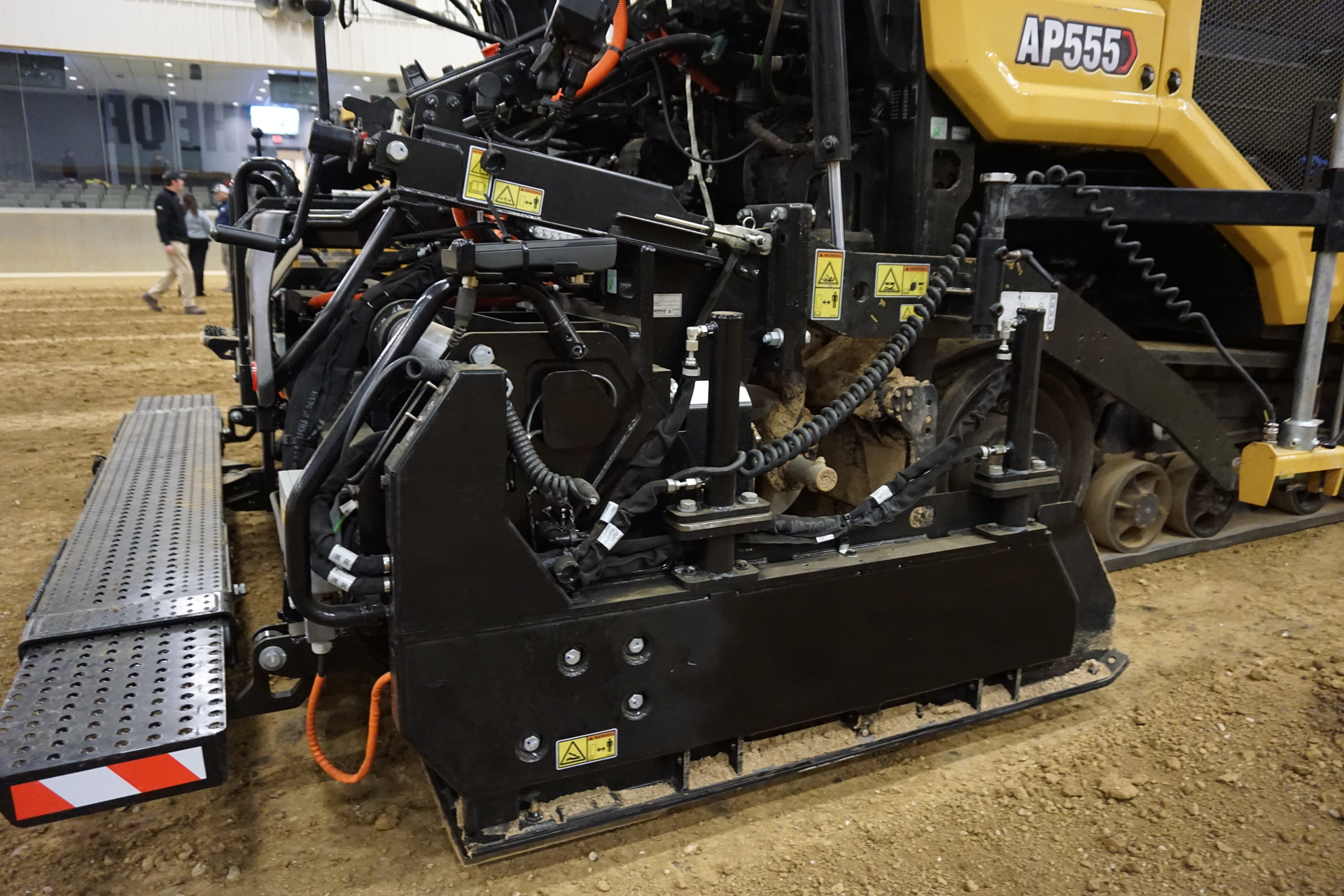
The SE47 V and SE47 FM offer efficient heating and simple adjustments.Equipment WorldRear-mount screeds are typically chosen by 25 percent of customers, and Pennsylvania-based Schlouch Incorporated is one of them. “Over the years our employees have consistently given us the feedback that the rear-mount screed works the best for them,” says Glen Powell, Schlouch paving department coordinator and project manager.
The crew at Schlouch has been field testing the AP455 with the SE47 V for the past year. Here are some of the reasons why they prefer the rear-mount screed:
Full catwalk: “It has a full catwalk. When you run the extensions out, the catwalk extends with it so they can continue to walk out to the end of the extension,” says Powell. This allows for excellent visibility when paving in neighborhoods around stormwater inlets. Durability, rigidity and weight: The setup is also well-suited for high-tolerance applications such as sport courts. “The added weight of the screed behind the machine gives us a nicer mat coming out from behind, gives us a little better compaction right behind the screed and allows us to achieve good results,” says Powell.
A front-mounted system may be a better option for contractors who frequently need to maneuver around obstacles like curbs and light poles. The SE47 FM is equipped with hydraulic extenders in front of the main screed and offers a smaller footprint that reduces handwork at the start of the paving pass. When the paving width is reduced, material is quickly drawn back into the auger chamber.
For contractors requiring wider paving capability, optional extension packages, as well as berm attachments, are available for the SE 47 FM.
Fuel-efficient power
Cat designed the new pavers with an eco-mode feature that pairs with automatic speed control to reduce fuel consumption. In most conditions, the engine can operate at a lower rpm and still deliver the required power to meet performance requirements. If needed, the engine will automatically adjust to a higher engine speed if certain load conditions are met.
The AP400 and AP455 have a 120-horsepower Cat C3.6 engine, and the AP500 and AP555 run on a 148-horsepower Cat C4.4 engine. Both engines meet Tier 4 Final emissions standards.
Enhanced visibility
Operators will immediately appreciate the enhanced visibility into the hopper and unrestricted forward view on these compact machines. The exhaust stack has been integrated into the new hood design and does not extend upward as it does on other Cat paver models. The pavers’ small footprint delivers excellent mobility in tight spaces and low-clearance applications.
“A few of the things we noticed right off the bat was the visibility around this machine,” says Powell. “Most notably, the elimination of a stack in front of the engine compartment. That now allows the operator to really see what’s in front of him, as well as a little bit lower hopper size on the machine. When you’re dumping trucks into the paver, the spotter that stands next to the machine can see in the hopper, see when it’s filled, see when the truck is empty and has better visibility into that area.”
Smooth material flow
Smaller augers deliver smooth material flow at narrow widths, helping contractors achieve quality targets. The 14-inch diameter augers efficiently move material through the auger chamber. Operators can control each material feed sensor when using cut-off shoes or when paving at narrow widths. Simply switch to manual and use the proportional control dial for the feed system.
Did you miss our previous article…
https://constructionosa.org/?p=1024
Call 811 Under Fire – Reports Reveal $61 Billion in Waste, Significant Flaws

Has Call 811 left you high and dry, or worse – on the receiving end of a utility strike or near miss? Two recent studies say the national utility locating system is riddled with $61 billion in waste and significant process flaws, including inaccurate line marking and slow response times.
The recent study commissioned by the Infrastructure Protection Coalition took an in-depth look at 811 operations in every state and Washington D.C. and found the waste and excess costs are creating unnecessary hazards for public safety.
The worst offenders – Arkansas, Florida, Georgia, Michigan, Missouri, Wisconsin, and the District of Columbia – account for more than 20 percent of the national waste due to lax policies and procedures. In some instances, states did not even require mandatory reporting of damage to utility lines.
Waste and cost overruns largely were caused by:
Utilities and third-party locators needlessly sent out to locate lines for construction projects that then do not happenPoor instructions given to locators, causing wasted time or additional workLocate marks destroyed by construction and then needing to be reinstalled Contractor wait time when location efforts exceed the legal notice period
A separate survey conducted by the Associated General Contractors of America had similarly alarming results. Ninety-nine percent of contractors surveyed were familiar with the 811 system and the requirements before excavating, but 73 percent reported weaknesses in the 811 processes.
Respondents cited the lack of accurate utility locating by utility owners and operators as the biggest problem. In addition, 56 percent of firms with concerns about the 811 system said slow utility owner and operator response times were a significant weakness.
The two largest causes of utility line strikes and near misses are unmarked or mismarked utility lines (53 percent) and the failure of utility firms to properly mark their lines within the required amount of time after 811 has been contacted (25 percent).
Many contractors reported being unfairly blamed for damages even after contacting 811. Indeed, the survey showed nearly two-thirds of contractors reported receiving a claim from a utility owner and operator for damage to a line the construction firm was not responsible for damaging.
Industry Leaders Sound Off
Industry association leaders voiced their disappointment in the utility location system and the dangerous position it puts contractors and community members in.
“Construction firms are doing their part to avoid hitting utility lines, but the current 811 system appears to be badly flawed,” says AGC CEO Stephen E. Sandherr. “Fixing the 811 system will go a long way in protecting the safety of construction crews and the communities near these utility lines.”
“Ultimately, ratepayers are picking up the tab for this waste and bearing the public safety risk. Some states have figured out how to work this system safely and efficiently, and there’s no reason others cannot do the same,” says Power & Communication Contractors Association CEO and Infrastructure Protection coalition member Tim Wagner.
The studies come at a critical time for the nation’s infrastructure, as trillions of dollars will be funneled into new projects with the passage of the infrastructure bill. That means tens of thousands of miles of new highway, bridge, road, broadband, and water and sewer infrastructure construction, all of which will be near existing underground utilities.
Fixing the Broken System
So, what’s the solution? An overwhelming majority of AGC survey respondents (98 percent) want contractor representation on local 811 center boards of directors. Many respondents also urged all utility firms to be required to participate in the 811 process. Ninety-one percent of firms added they already conduct training with their employees on how to use, and comply with, local 811 requirements.
The Infrastructure Protection Coalition study found excessive costs and risks could be reduced if states with the worst records adopt more effective practices and procedures already in use in other parts of the country.
The Infrastructure Protection Coalition is a group of associations representing broadband, electric, natural gas, pipeline, transportation, sewer, and water industries. They are regular users and stakeholders of the 811 system.
Associated General Contractors of America represents more than 27,000 construction contractors and industry-related companies. The 811 survey was conducted in late August and September. Five hundred twenty construction firms responded to the survey, representing virtually every type of excavation activity in the industry.
Did you miss our previous article…
https://constructionosa.org/?p=1000
Finding the Right Finance Partner for Your Construction Business
Financing companies talk about partnering with clients. They all say it matters. They all say they’re really good at forming solid relationships. But does finding and selecting the right financing partner really matter to construction businesses?
The short answer is a resounding “yes.” Selecting the right financing partner can make or break a business.
The right financing partner will have the resources and expertise in construction equipment the business needs. That partner will integrate into and be committed to the success of their client. This isn’t just for altruistic reasons; when both the client and partner realize success, they both achieve more and grow more.
5 points to consider when choosing a financing partner
Choosing the right financing partner can make a measurable difference in the life of your company. Every business and every financing company is different, but the points below are good indications that you are on the right track in choosing an effective partner.
It’s not all about pricing. A true partner is in it for the long term – literally, in good times and in bad – and is looking for a long-run relationship rather than a one-time transaction. Moreover, you typically will be working with a finance company for a long time – hopefully, for the life of your business. For that reason, you need a relationship that’s more than transactional.It is about information. Good partners will have in-depth questions about your business, your equipment, your goals and your process. They will want to meet in person, in a Zoom meeting and/or over the phone – on an ongoing basis. Keeping up-to-date with you and your business should be a commitment you hear early on from any financing company you meet with.They will push to talk with the right people. A partner that wants to understand your business will work to make sure they meet with the people within your organization who know your processes and who make decisions. They will spend time learning your business, while valuing your time and their own.The average tenure of a business relationship with clients is measured in years. A partner that approaches business from a long-term perspective, versus one that is based on volume and quotas, often works in the best interest of not only itself, but its clients. Ask about the financing partner’s average tenure with clients. Good ones may be three times the industry mean.They won’t be afraid to call out problems or concerns, and challenge decisions. Remember that a real partner is as committed to your success as you are. It’s not about being a “yes man.” They want to learn about your business challenges and then identify financing solutions that can help solve said challenges. Financing is not a one-size-fits-all product; make sure any financing company is tailoring its offerings to meet your needs.
The consultative approach
Companies may hear about financing companies taking a “consultative approach.” But what does that really mean? And is it the best approach?
The consultative approach to business engagement refers to the commitment to learning about clients’ businesses and business models before ever suggesting a financing method or program. Instead of a commodity solution, a consultative approach will result in recommendations that help you achieve your short-term as well as long-term goals.
The approach also works from a position of expertise. A consultant, by nature, is someone with expertise and experience in their field. Working with a financing partner who has experience working in the construction industry, and/or running, a business means they can think like you do. It also means they can think ahead and know the likely challenges you will face. That external perspective – a hallmark of the consultative approach – contributes important knowledge that can help a business stay on track or pivot when needed.
As the financing partner becomes more and more knowledgeable about your company, they can become an extension of your business. In return, you will gain more and more confidence that they’ll deliver what and when they say.
Partner resources
Most of the time, a financing partner will be able to provide financing solutions for your business. However, there are times when a company needs other resources. A good financing partner can be invaluable in these situations, which could include:
Personnel, experts: Perhaps what a business really needs is an interim CFO, a CPA with international experience or a strategic advisory board. A good partner with deep connections in the industry will be able to help with strong referrals and connections.Customized financing programs: Many financing companies will work with generic rates for different industries. While that can be a good place to start, a partner will determine what’s really right for your business and suggested a specific, often-customized, program.Business financing: As economies work to recover from the pandemic, many businesses are finding they need different and additional help to fund the growth they’re experiencing from pent-up demand. A strong financing partner could analyze and provide alternatives, whether it’s a line of credit supported by account receivables, equipment refinance or funding the ramp-up of inventory.
Often, the partner will be able to identify a company’s real needs, looking at a situation through the lens of experience and expertise. Other times, the business will know its needs, but not realize that a financing partner – versus a commodity lender or bank – can help. In times like those, working with a knowledgeable partner makes running and growing the business much easier.
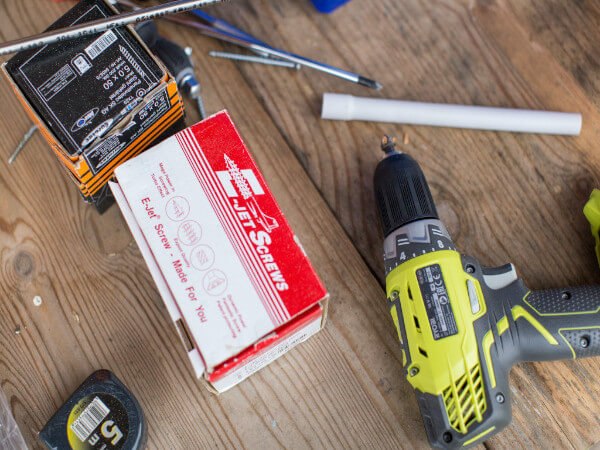
Ivan Franklin, vice president – construction, vendor services, Mitsubishi HC Capital AmericaMitsubishi HC Capital AmericaShared vision, shared success
Solid financing partners are committed to a shared vision and shared success, and to building trust. Any of us who can surround ourselves with people as committed to our success should count ourselves as fortunate. In choosing the right financing partner, a construction business will find additional expertise, resources and flexibility to grow their business efficiently and effectively.
Ivan Franklin is Vice President – Construction, Vendor Services, at Mitsubishi HC Capital America, a provider of financing solutions that are tailor-made for the construction industry.
Beat the Cold with Allmand Maxi-Heat 1M BTU Portable Power Heater

Cold weather isn’t just annoying, it’s dangerous. Workers exposed to low temperatures over long periods of time perform poorly. Extreme cold can cause hypothermia, which can lead to confusion and disorientation. Single-digit temps can turn lube oils into sludge and cause metal parts to fracture.
Whether it’s temperature-critical outdoor operations or unheated buildings, warehouses, and shops, your best defense is a portable power heater like the new Maxi-Heat 1M BTU from Allmand. This towable, indirect-fired unit has two independent burners providing up to 1,000,000 BTUs of heat combined. The Maxi-Heat can easily transition from heating indoor spaces to warming equipment to curing concrete.
Allmand says the key customer feedback they addressed with the new model was noise. “We heard it was reliable and durable but it was also loud,” says Dave Jones with Allmand. In response, Allmand reduced the sound by 60%.
“We see a lot of these on bridge projects in the winter when contractors are painting,” Jones says. “They tarp it off and continue to paint.”
The iQ system automatically calibrates each burner for reliable, consistent results and eliminates the trial-and-error combustion measurements and adjustments. Recirculation is standard on all Maxi-Heat products, resulting in increased efficiency and lower fuel consumption.
Key features include an external control panel that allows you to adjust settings without opening the heater door and a centrifugal fan, which decreases noise and increases airflow efficiency.
Power options include a Cat C1.1 engine (13.8 horsepower) or a Kubota D1005 engine (11.6 horsepower). Run time is approximately 38 hours. For towing purposes, it uses a 2-5/16 -inch bulldog hitch. The gross vehicle weight rating (GVWR) is 6,000 pounds. To pipe the heat indoors, duct flange outlets are offered in 12-, 16-, or 20-inch sizes.
Did you miss our previous article…
https://constructionosa.org/?p=949
Takeuchi adds EquipmentShare locations in Las Vegas, San Diego as Dealers
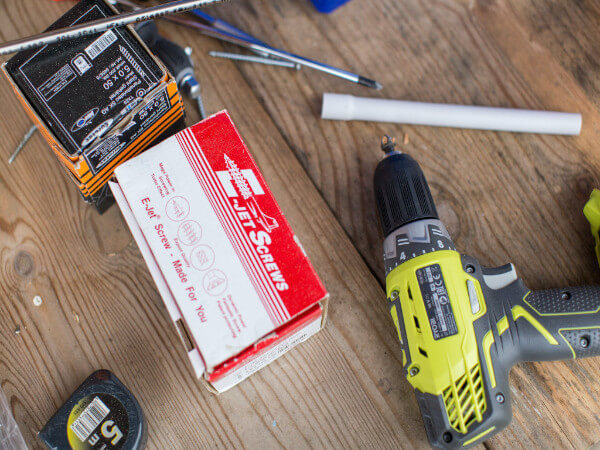
Takeuchi-US has named EquipmentShare locations in the Las Vegas and San Diego metro areas as dealers. The Las Vegas location will carry Takeuchi’s full line of compact excavators, wheel loaders and track loaders for sale and rental. The San Diego location will focus primarily on compact excavators and track loaders. Both locations will offer replacement parts and service for customers throughout Clark County, Nevada and Imperial County, California.
Founded in 2014, EquipmentShare offers and supports multiple heavy equipment product lines.
“We’ve had a consistently good experience with Takeuchi since we began working with them in the summer of 2020,” said Jabbok Schlacks, co-founder and CEO of EquipmentShare. “Takeuchi integrates quality into everything they do, from the equipment they manufacture to their customer and dealer support. Our customers have been very satisfied by the durability, comfort, and productivity they get from their Takeuchi machines. We’re looking forward to continued success with the Takeuchi line in the San Diego and Las Vegas areas.”
“EquipmentShare is an outstanding company, and we’re very pleased that they are now representing the Takeuchi line at four locations,” said Henry Lawson, director of sales for Takeuchi-US. “By working with EquipmentShare, we’re now able to introduce Takeuchi equipment to an even broader customer base in the Southwestern U.S. We look forward to great success with EquipmentShare in the months and years ahead.”
EquipmentShare has added sales professionals at both locations to support Takeuchi equipment. The company began carrying the Takeuchi line at its headquarters location in Columbia, Missouri in July 2020, then added Takeuchi equipment to its North Salt Lake, Utah, location in January 2021.
Did you miss our previous article…
https://constructionosa.org/?p=942
Deadline Extended: Contractor of the Year applications due Nov. 26

Equipment World has extended the application deadline for the 2022 Contractor of the Year contest to Friday, November 26.
The contest is designed to honor small to medium-sized contractors who have excelled in their markets. Company owners who meet the following criteria are eligible to apply:
1) have been in business 10 years or more,
2) have between $3 million and $15 million in annual revenues,
3) have an excellent safety record
4) will represent the construction industry in a positive way.
Applicants can either be self-nominated or nominated by others. To access the COY application, click here
Why apply? 2020 winner Toby Drake, owner of Drake Construction, Kotzebue, Alaska, says, “It really gives me a gauge of where I’m at nationally with some of these other folks. From the other side, there’s the marketing aspect. That’s a great tool to tell a new employee we must be doing something right to win an award like this.”
Each finalist and their guest will receive an expenses-paid weekend in Las Vegas, courtesy of Caterpillar, which has sponsored the program since its inception in 2000.
The event includes industry roundtable discussions, an awards banquet and entertainment. All finalists will stay at the premier Wynn Resort on the Las Vegas strip from March 17-20, 2022.
The 2022 Contractor of the Year winner and finalists will be featured on the Equipment World website.
The first 50 contractors to send a completed application will receive a Cat hat, courtesy of Caterpillar. To apply, click here
Did you miss our previous article…
https://constructionosa.org/?p=934
Remote-Control Crawler Crane: Liebherr’s New LR 1400 SX (Video)

With a compact design and self-loading system, Liebherr’s new LR 1400 SX crawler crane is easy to transport and gets to work quickly, the company says.
This weightlifter can handle up to 400 metric tons and requires no heavy tools for assembly and take-down. “The complete assembly is remote-controlled and can be carried out in a very short time,” says Mountain Crane Services CEO Paul Belcher.Furthermore, all crane movements can be done with the remote control.” The remote-controlled operation increases overall visibility, therefore increasing safety.
Railings and platforms remain on the upper carriage during transport and can be folded out at the jobsite. The winch can be installed in the same easy manner – simply position it with the assembly cylinder and pin it from a secure distance with the remote control.
Despite its size, the 46-ton LR 1400 SX has a wide range of applications.For barge operation, the available barge load charts for any configuration and any possible counterweight combination are crucial. The modular counterweight system is very good,” says Andreas Handel, head of mechanical engineering hydro construction at DepenbrockIf a smaller counterweight is sufficient, the unit can also be used on a correspondingly smaller barge/jack-up platform. This makes the use of the LR 1400 SX very flexible.
The LR 1400 SX shows off its flexibility and mobility when space gets limited. The new model can adjust its tracks to navigate tight spaces and the fourcrawler drives make for smooth operation.
The gradient travel aid allows for safe travel on slopes. It displays the center of gravity of the machine and warns the operator before entering an unsafe zone.
The Ground Pressure Visualization system calculates the current ground pressure of the crane in real time and compares it with the specified safety limits. The ground pressure is displayed in the cab, making the operator aware of any critical conditions. “This is a super feature. We have to constantly observe and monitor the ground conditions,” says Belcher.
Additional plates at the front and rear reduce the ground pressure by up to 52 percent. “Specifically, the wide crawlers and the ground pressure reduction plates convinced us,” says Ludger Holtmann, technical director, Depenbrock.
Check out this animated video of the LR 1400 SX setup process:
Did you miss our previous article…
https://constructionosa.org/?p=931
Inspection Failure: New Report Blames ArDOT for I-40 Bridge Closure

A new report by the Arkansas Department of Transportation says its Heavy Bridge Maintenance Inspection Program should be placed under new management and reorganized for failing to locate a cracked tie girder that led to an emergency closure of a major I-40 bridge.
The Hernando do Soto Bridge over the Mississippi River between Memphis, Tennessee, and West Memphis, Arkansas, was shut down from May 11 to August 2 after a crack was discovered during a routine inspection. The closure of the major freight corridor cost the trucking industry an estimated $2.4 million a day and led to rerouting 55,000 drivers that use the bridge daily.
The After Action Report released November 10 outlined several management flaws in the bridge inspection program that let to the crack going undetected since at least 2016. The same day the report was released, two longtime bridge engineers retired, according to news reports.
The ArDOT report casts much of the blame on an inspector fired soon after the bridge was closed. The report says ArDOT asked the U.S. Department of Transportation’s Office of Inspector General “to determine if this negligence constitutes a criminal action.” It says the inspector general’s office has interviewed ArDOT bridge inspection employees and been provided data and reports. ArDOT is awaiting the investigation’s conclusion.
The ArDOT report says the crack in a welded splice between two plates in a tie girder “was visible at least as early as 2016,” and the fired inspector “was directly responsible for inspecting that portion of the bridge in 2016, 2017, 2019 and 2020.”
A drone inspection in 2019 had photographed the crack. The 2021 routine inspection that led to the bridge’s closure was conducted by Michael Baker International, ArDOT’s consultant bridge inspector.
Management failure
The ArDOT report faults management of the agency’s Heavy Bridge Maintenance Inspection Program for failing to properly handle complaints about the fired inspector.
“Management’s failure to adequately act on reports by employees concerned with the terminated inspector’s job performance perpetuated a culture where team members did not feel they had the authority or support to question a lead inspector’s procedures or thoroughness,” the report says.
The bridge program failed to rotate inspection teams, which enabled the same lead inspector to inspect the same arch spans on the I-40 bridge four times between 2016 and 2020. The inspection reports “lacked adequate details,” failing to show which inspector was responsible for specific bridge sections and when specific elements were inspected.
It also said the bridge’s inspection in 2018, the one the fired inspector did not conduct, was performed by an inspector who had never inspected that portion of the bridge before, due to “a lack of adequate management and organization by administration.” That inspector “has been verbally counseled and will receive additional training.”
The report calls for committees to be formed for oversight, additional leadership and accountability, and the program needs more personnel to strengthen it.
A professional engineer should provide on-site supervision of each complex, heavy bridge inspection, and bridges that are fracture critical should not be inspected by the same inspector consecutively, the report says.
Internal cracking present for decades
The initial crack that led to the bridge’s closure formed in the interior face of the girder box during a repair when it was being fabricated in the 1970s and was not visible, according to the report.
The repaired area was more susceptible to cracking because of the steel and welding methods used in the 1970s. The report says the cracking likely started soon after the repair, was never detected, even during ultrasonic testing in 1982, and “remained unchanged for a number of years.”
The crack reported in May of 2021 had “fractured through the remaining thickness” and was photographed in a 2019 drone photo. The fracture extended up the “the remaining web, across the top flange.”
The report says the crack likely spread over time because of low temperatures, increased tie girder stress and heavier traffic loads.
While the bridge was closed over the summer, ultrasound inspections determined that multiple other welds on the bridge had hidden anomalies. That led to additional steel plating added by Kiewit, which was awarded the repair contract.
In all, the emergency repairs and follow-up inspections cost $10 million, the report said.
The ArDOT report says “it is highly unlikely that a similar fracture will occur” on the I-40 bridge because there was no evidence of fatigue crack growth elsewhere. But it also calls for continued “arms-length fracture critical inspections,” and that ultrasonic testing be performed periodically.
Did you miss our previous article…
https://constructionosa.org/?p=865